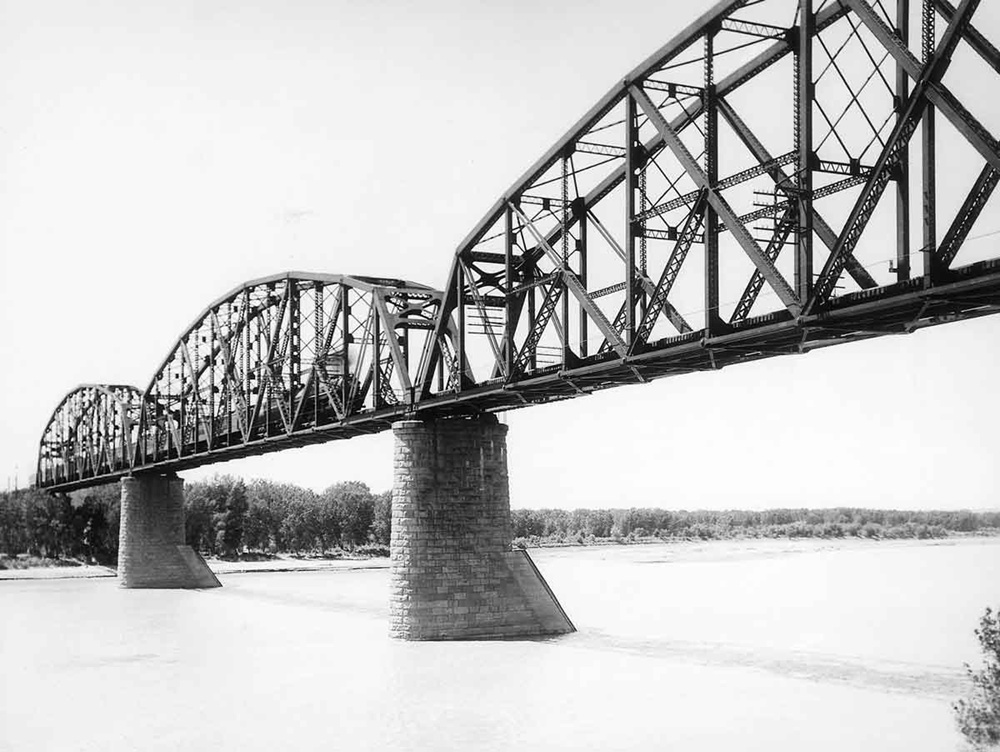
BISMARCK, N.D. — The state of North Dakota will not become involved in a claim that the state owns a BNSF rail bridge slated for replacement, leading the preservation group that made the contention to say it is “shocked” by the decision.
The Bismarck Tribune reports the Friends of the Rail Bridge group seeks to preserve the Bismarck-Mandan Rail Bridge — parts of which date to 1883 — as a pedestrian bridge; BNSF wants to tear the bridge down and build a new one on the same site. The Friends group has claimed the state owns the bridge, rather than the BNSF, as the result of the transfer of properties from federal to state ownership when North Dakota achieved statehood. In that case, the state would have a greater say on the future of the bridge [see “Preservation group claims state owns aging North Dakota rail bridge …,” Trains News Wire, March 7, 2022].
But the state Attorney General’s office told other state officials that an opinion from the office was not warranted because no state agency is involved in the ownership dispute.
The Friends group said it will “do the best we can with our limited budget and resources” to advance the ownership claim, but wondered, “If the North Dakota attorney general is not going to defend North Dakota’s ownership …. then who [is]?”
BNSF spokeswoman Amy McBeth told the newspaper the group’s claim “seems like one more last-ditch effort” to delay construction of a bridge “that everybody agrees is needed. … FORB’s assertion has no factual merit.” She said the railroad will provide conclusive proof of its ownership to the U.S. Coast Guard, which is involved in the bridge dispute because the bridge is over the Missouri River, a navigable waterway.














I checked some other legal friends of mine, oh they love to argue, but the consensus was that the bridge belongs to BNSF, just like the rails and ties. But the land under the river is an easement or ROW.
When most railroads abandon a ROW, they pull the rail and remove the bridges typically, unless the expense is too great then they just leave them behind.
Did they read the research posted at friendsoftherailbridge.org? The question has never been asked in North Dakota but as far as what constitutes the riverbed, it was defined at the time of North Dakota statehood as including anything embedded in the river.
It’s not quite accurate. BNSF have determined a plan that is “exactly how we want to do it to be advantageous to us”. The plan is to build a new bridge alongside, get it up and running, and then tear down the historic bridge. FORB is asking, why won’t you bring a plan where the historic bridge (which belongs to the State of North Dakota) stays standing upon completion of the new bridge? . . . The answer being BNSF’s statement above about what’s most advantageous for them.
If they left the old bridge standing, who would pickup the liability concerns? Could the bridge preservation group afford ownership and liability insurance?
A similar project already exists in North Dakota at the Fairview Lift Bridge. Lanky is managed at minimal cost.
Further, the state has a large insurance pool for risk mitigation that includes highways, parks, and bridges. This would increase that minimally if at all.
Does North Dakota really want to build a railroad bridge? Looks like a Portageville Bridge situation is developing wherein disagreement about who would pay is going to delay a project for years if not decades. At least the current bridge is not quite a museum piece as Portageville was a shrine to George S. Morison and the bridge design of 1875 (towers) and 1903 (trusses)–and footings from 1851!